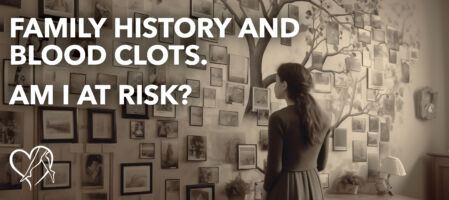
Blood clots are a serious medical condition that can lead to severe health complications or even death if left untreated. While anyone can be at risk, understanding your family history can provide valuable insights into your susceptibility. Let’s explore the connection between family history and blood clots, the symptoms of a blood clot, and the relevance of lower leg pain in assessing your risk.
Before delving into the impact of family history, let's first understand what a blood clot is. A blood clot, also known as a thrombus, is a gel-like mass formed by blood coagulation. While blood clotting is a natural and essential process to prevent excessive bleeding when we're injured, issues arise when clots form inappropriately within blood vessels.
Blood clots can be either venous or arterial. Venous blood clots occur in the veins, which carry blood back to the heart. Arterial blood clots occur in the arteries, which carry blood away from the heart. Arterial thrombosis is when the blood clot blocks an artery. Venous thromboembolism (VTE) is when a blood clot forms in a vein and forms in a deep vein, usually in the leg, called a deep vein thrombosis (DVT). If a part of the clot breaks off and travels to the lungs, it can lead to a potentially life-threatening condition known as pulmonary embolism (PE).
Having a blood clot is a medical emergency, and recognizing blood clot symptoms is crucial for prompt medical attention. Common symptoms include:
Lower leg pain is often a key indicator of potential issues related to blood clots. It's essential to pay attention to the characteristics of the pain, such as its intensity, duration, and any associated symptoms, which include:
Persistent pain, especially in one leg, unrelated to an injury or physical exertion should raise concerns and prompt further investigation.
Family history plays a significant role in understanding your predisposition to blood clots. If a first-degree relative, such as parents or siblings, has a history of clotting disorders or has experienced blood clots, your risk may be elevated. Genetic factors can influence how your blood clots, making you more susceptible to clot formation.
“Venous thromboembolism (VTE) is a multifactorial disease caused by hereditary and acquired risk factors. Because there is often a hereditary component to the occurrence of VTE, thrombosis occurs more often in the first-degree relatives (i.e., parents, siblings, children) of patients with VTE than in the general population.” National Library of Medicine (NIH), 2014 Jul 21
In addition to family history, other risk factors for blood clots include:
You must proactively manage your risk if you have a family history of blood clots. Consult with your healthcare provider to discuss your family history and any symptoms you may be experiencing. They may recommend diagnostic tests, such as ultrasound or blood tests, to assess your clotting risk.
Additionally, lifestyle factors contribute to your overall risk of blood clots. Factors such as obesity, smoking, prolonged immobility (such as long flights or bed rest), and certain medical conditions can increase your susceptibility to clot formation. Understanding and addressing these factors and your family history can help formulate a comprehensive risk assessment.
Fortunately, there are steps you can take to reduce your risk of blood clots, especially if you have a family history. These include:
The treatment options for a blood clot primarily involve using anticoagulant medications, commonly known as "blood thinners." These medications slow the body's ability to form new clots and prevent existing ones from getting bigger. Commonly prescribed blood thinners include unfractionated heparin, low molecular weight heparin, warfarin, and direct oral anticoagulants.
Additionally, thrombolytic medications can break up existing clots, and catheter-directed treatments, surgical thrombectomy, and intermittent pneumatic compression devices may also be used as interventions.
If you have undiagnosed leg pain, swelling, or skin discoloration, you may have a blood clot. Seek immediate help. Center for Vein Restoration (CVR) offers a same-day DVT-rule-out service. If needed, CVR can provide anticoagulation treatment, education, and follow-up. Our hotline is 877-SCAN-DVT (866-969-3470).
Understanding the connection between family history, blood clots, and vein disease is crucial in managing your health. If you have a family history of blood clots or venous insufficiency, paying attention to the signs and symptoms, especially lower leg pain, is vital.
Center for Vein Restoration is a nationally recognized vein clinic specializing in treating varicose veins and other venous conditions. You can visit any of CVR’s 110+ locations to diagnose and treat vein-related issues, including varicose veins and venous insufficiency. Our vein clinics offer outpatient vein treatment options to help you return to the active, comfortable lifestyle you enjoy.
CVR accepts many insurances, including Aetna, Amerigroup, Anthem, Blue Cross/Blue Shield, Cigna, MultiPlan, Medicaid, Medicare, and more.
Call 240-965-3915 to speak to a Patient Services Representative or schedule your consultation online at a CVR vein clinic near you today.